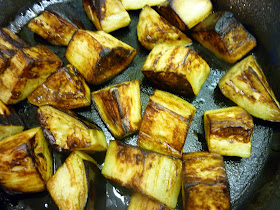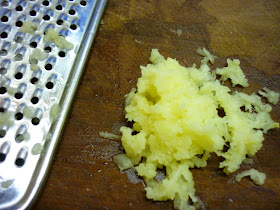I've been interested in healthy eating for so long now, it's hard to imagine a time when I wasn't! I do remember when Eric and I decided to stop eating meat. It was soon after I moved back to the south-east, close to London, in 1978. We started eating at vegetarian restaurants and going to Health Shows like the Festival for Mind and Body which were just beginning at Olympia then.
I remember there was a lovely vegetarian restaurant close to where I lived in Wimbledon Village and, after a particularly enjoyable evening there, we both agreed that giving up meat wouldn't be difficult if we could eat as well as that all the time. So we did and never looked back!
At the time, vegetarian cookbooks were pretty thin on the ground. Some of the first recipes I used were by Rose Elliott from books such as The Bean Book and Not Just a Load of Old Lentils. They may seem overly simple nowadays but, at the time, they offered a wide range of meat-free alternatives designed to fill the gap left by cutting out meat.
These days, vegetarian food has been transformed thanks to the influence of many world cuisines, such as Indian, Thai, Chinese and Lebanese, which are often high on vegetables and low on animal fats. Eating out has never been easier and lentils are no longer the preserve of cranky vegetarians! Here's a very cheap and tasty recipe using red lentils which can be ready in half an hour. With the addition of delicious fried aubergines, this makes a great supper dish.
By the way, many recipes suggest salting aubergines and then rinsing to remove bitterness. Unless they are very overgrown and full of dark seeds, I've never found this necessary.
Ingredients Serves Four
1 large aubergine
1 large onion, peeled 2 garlic cloves, peeled
Small piece of root ginger (about 1" or 2.5cm) peeled
1 tsp ground cumin
1/4 tsp chilli powder
125g red split lentils
400g tin of good quality tomatoes
1 tbsp sundried tomato puree
Olive oil
Small handful of fresh coriander leaves
Wash the aubergine and cut into large chunks. Peel if the skin looks old or tough.
Remove from the pan and place on a plate till later.
Put the lentils in a sieve and wash under running cold water. Drain.
Chop the onions, crush the garlic cloves and finely grate the root ginger.
Reusing the same saute pan, heat a tbsp of olive oil and fry the onions, garlic and ginger for about 5 minutes. Then stir in the ground cumin and chilli powder.
Add the tinned tomatoes, sundried tomato puree, washed lentils and about 480ml water. Bring to a simmer and cover with a lid. Cook for about 20 minutes until the lentils are cooked and the mixture has thickened. Add salt and pepper to taste.
Now stir in the aubergine pieces and the chopped coriander.
Serve with fluffy basmati rice and a green vegetable, such as green beans or curly kale.

































